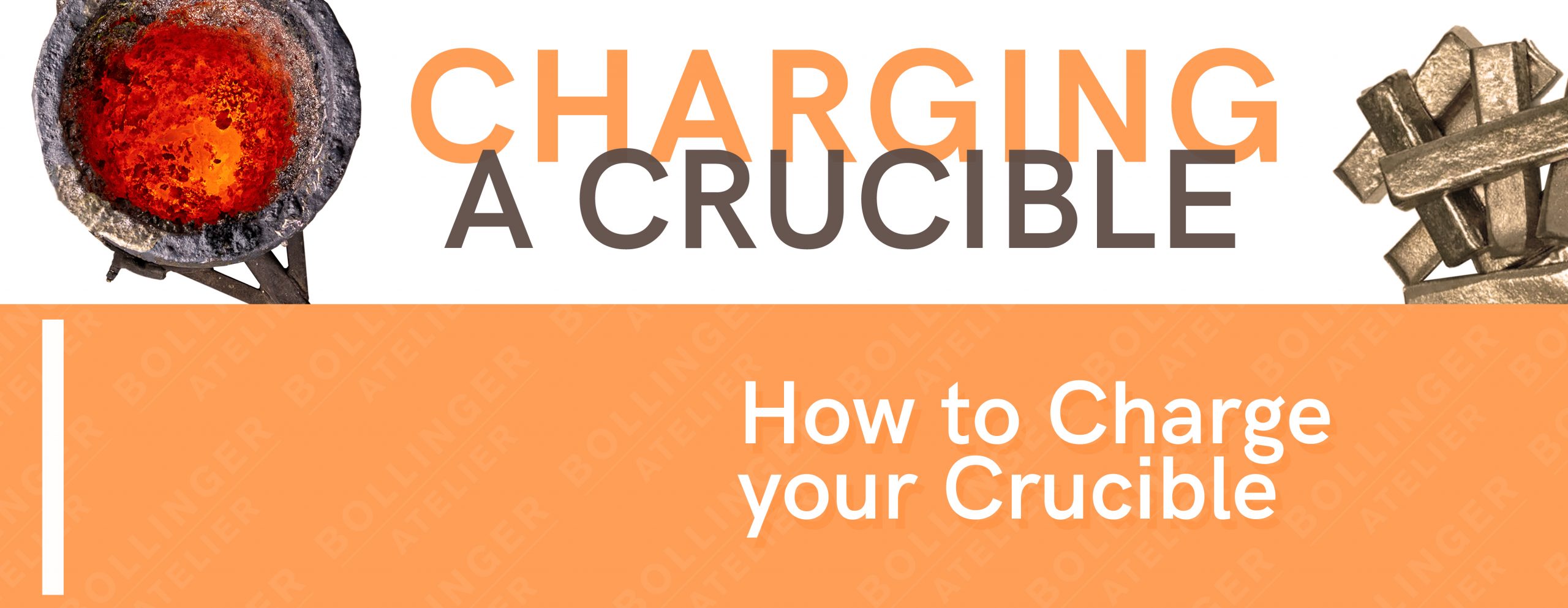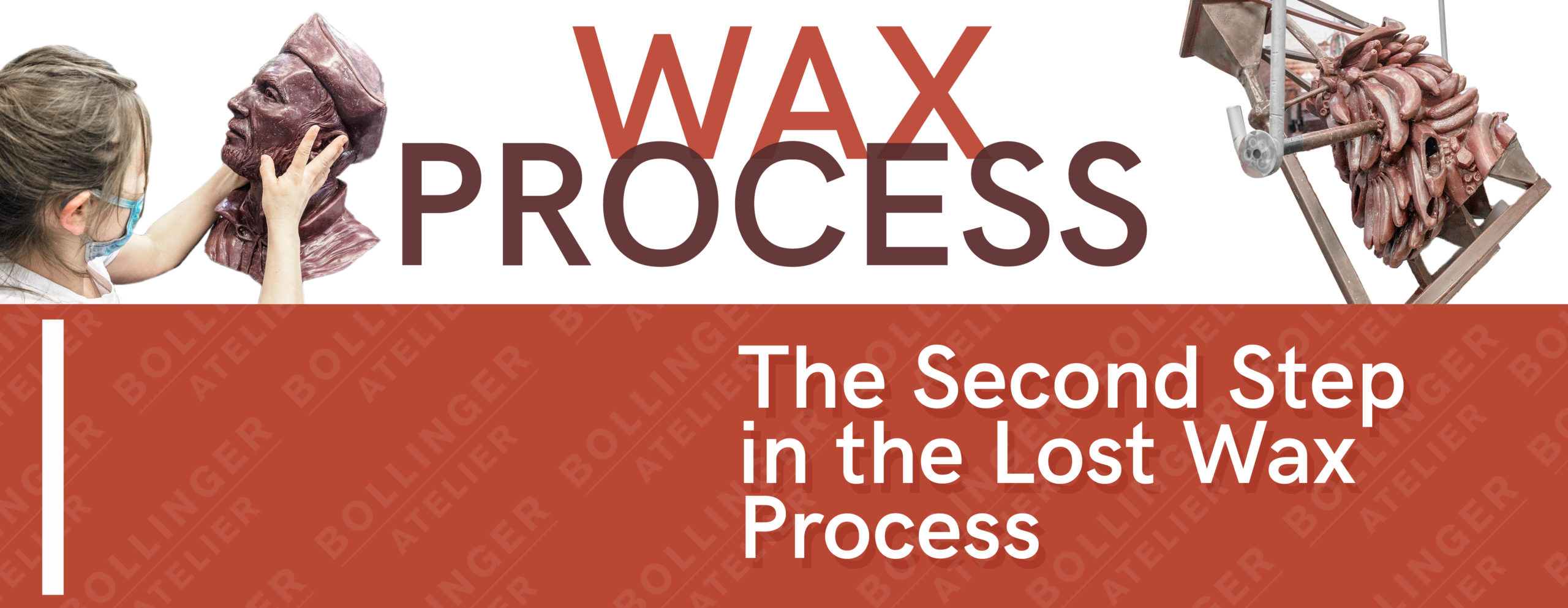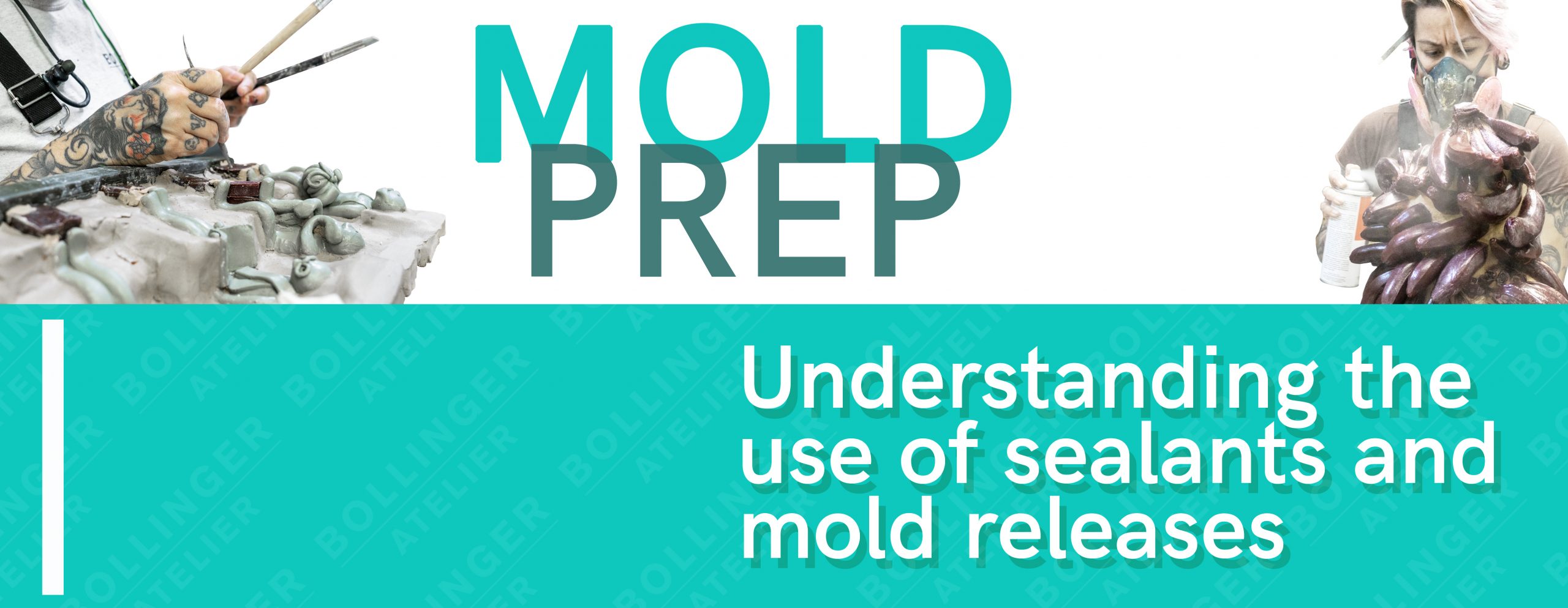Written by Daniel Mariotti
Photos and Video by Daniel Mariotti
With the furnace off, pre-load the crucible with small scrap and returns. Then, ingots can be carefully added. Dropping heavy charge materials into an empty crucible can damage it, resulting in reduced service life, sudden crucible failure, and personal injury. If only ingots are being used to charge the crucible, they should be gently lowered vertically into the furnace. Tongs can be used if your furnace is deep. Don’t pack the metal tightly, allow some room for the metal to expand and drop as it melts. This will reduce the likelihood of bridging. Bridging happens when the metal charge wedges itself between the crucible walls and fails to maintain contact with the molten metal during the melt.
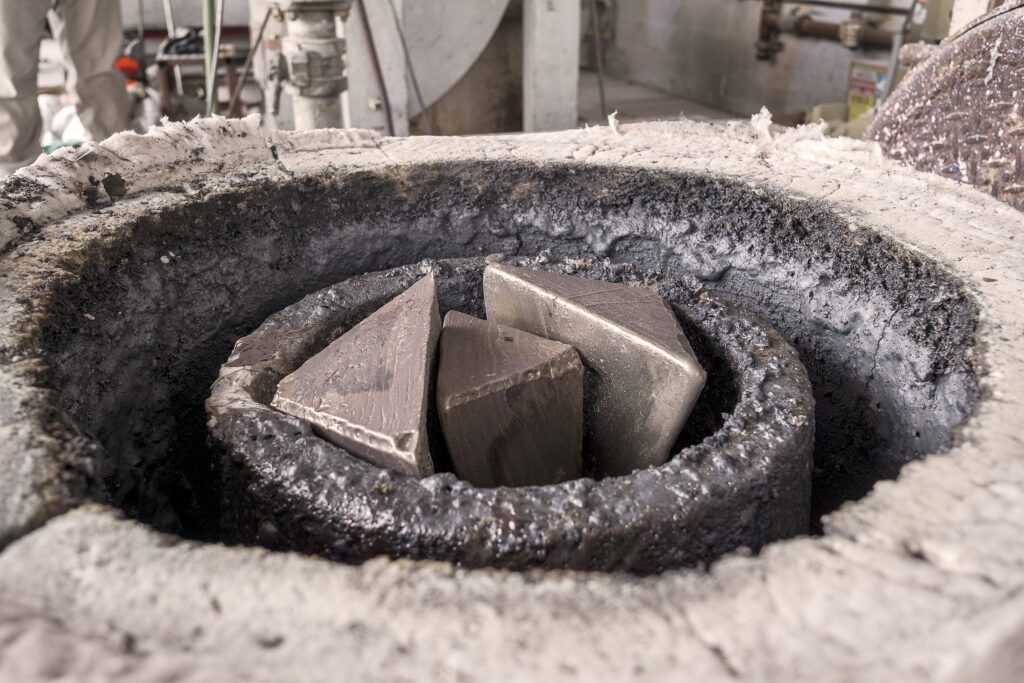
Once the furnace “gets going”, (where the furnace stays lit on its own and is ramping up in temperature) a proper air to gas mixture is desired in order to create an oxidizing atmosphere. Depending on the size of the crucible, this is where the metal will turn red hot and start to slump, drop, and melt, creating a molten bath at the bottom. During the melt, any additional metal to be added should be sweat of all moisture before adding to the crucible. Adding metal with trace amounts of moisture can result in an explosion.
Flux
Adding flux to the pot can help resist slag and dross accumulation in a crucible’s interior wall by using the proper amount based on weight. Remember when adding flux, do so after the metal is fully molten. (Note that with a forced-air furnace you should be turning off the gas and blower before adding the flux, or it is going to blow it back out).
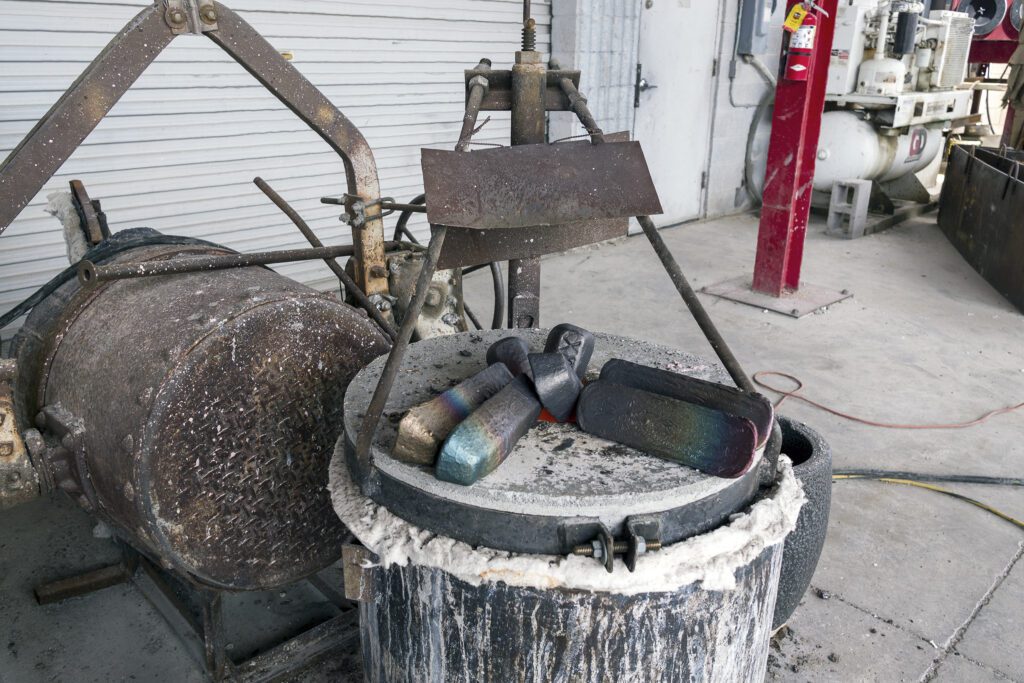
Cleaning and Maintenance
It is important to clean the crucible after every pour when it is still in a red hot condition. Dross has a high expansion rate and causes internal pressure that can damage the crucible. Any waste or impurity from other metals that form as a solid on the surface is defined as dross. Slag, however, is similar with the main difference being that slag is a liquid form.
A final thing to remember is to never overheat the crucible. Check with the manufacturer of your crucible for its maximum temperature limit and operate below that. Exceeding a crucibles temperature will cause damage to the crucible which can then lead to crucible failure.
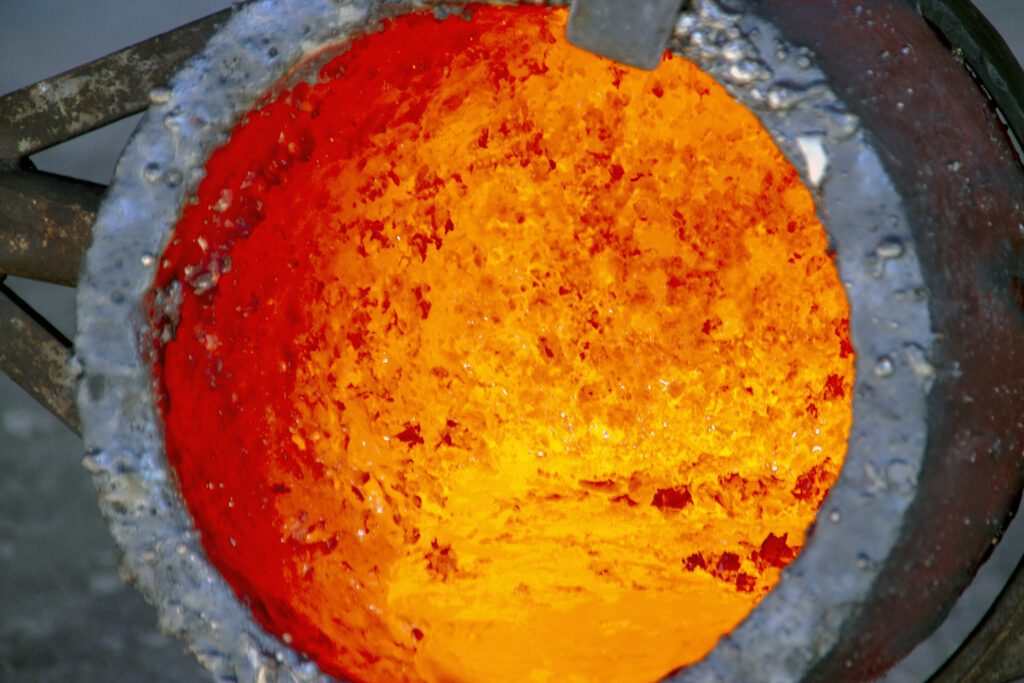
Safety
Proper safety clothing and equipment must be worn at all times in the vicinity of molten metal. Any residual moisture must be removed slowly from the crucible and/or furnace refractories before use. Ensure that no moisture or volatile materials are introduced into the melt. Provision should be made underneath the furnace to safely catch any metal that may be discharged. Crucibles used as transfer vessels must be sufficiently pre-heated before being filled with molten metal. Hot crucibles should not be placed down on a cold surface. Ensure that manufacturers’ recommendations for maintenance of furnaces are adhered to keep all inflammable material away from the furnace and ensure there is access to firefighting equipment. The crucible should only be used for the purpose for which it is designed or recommended.

